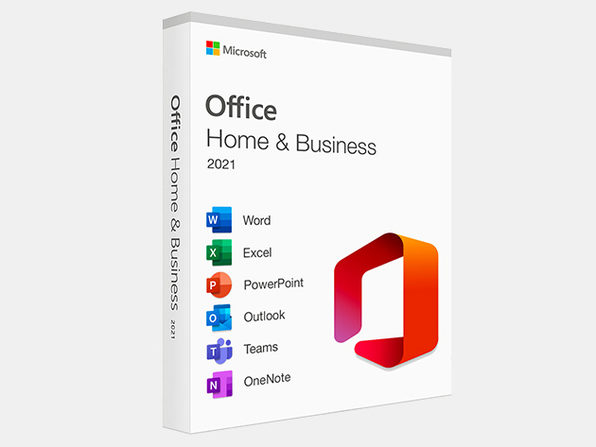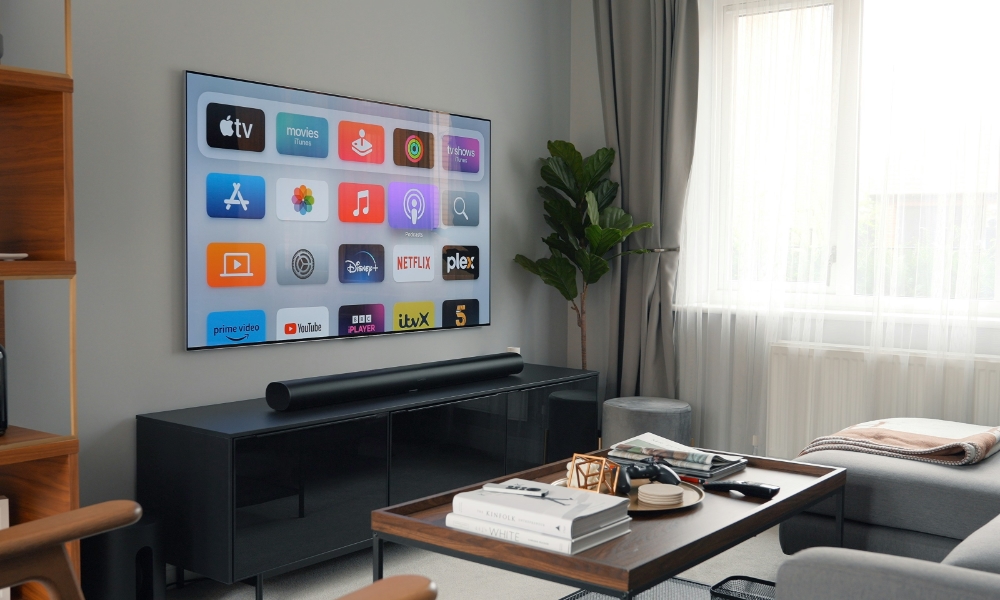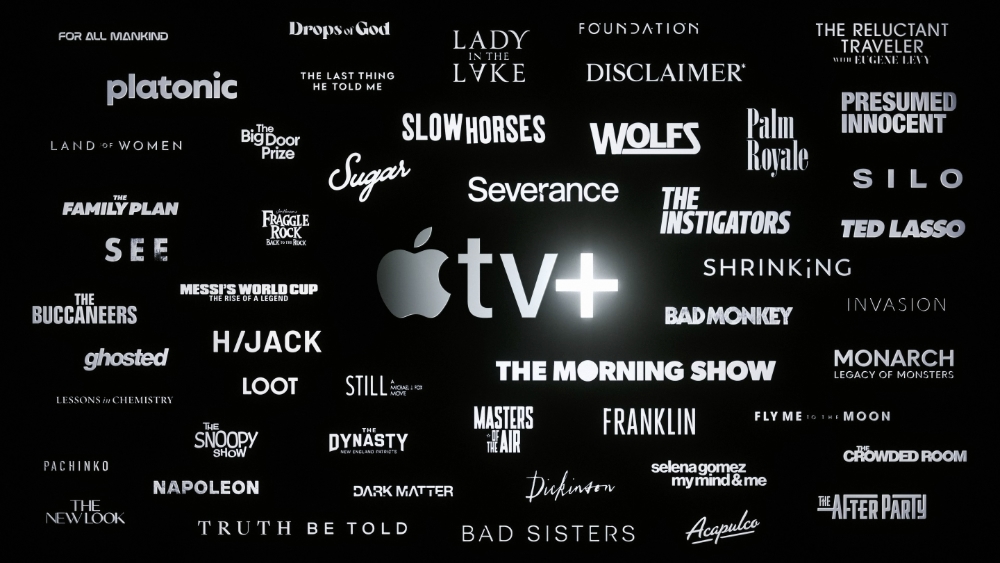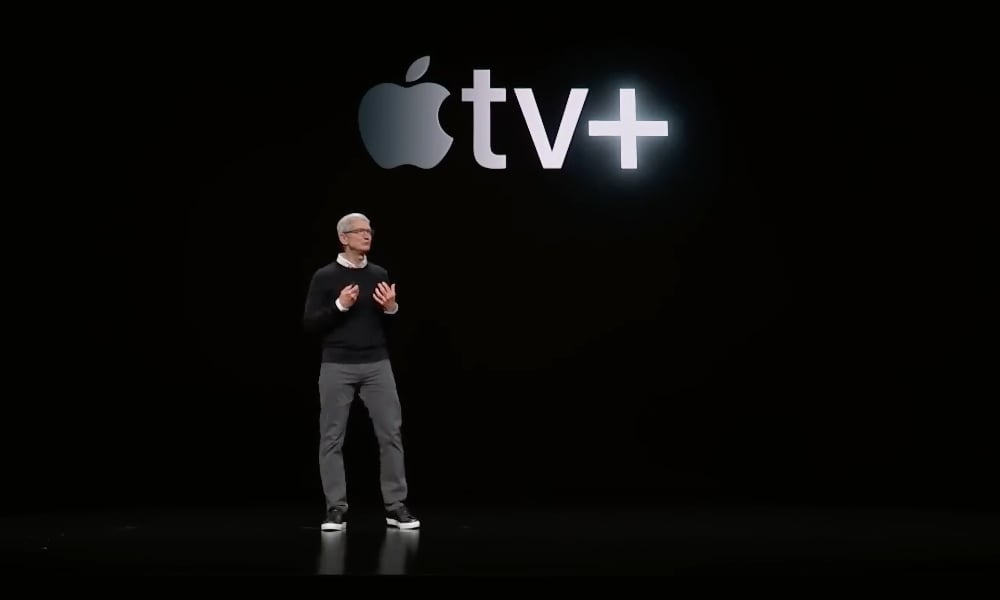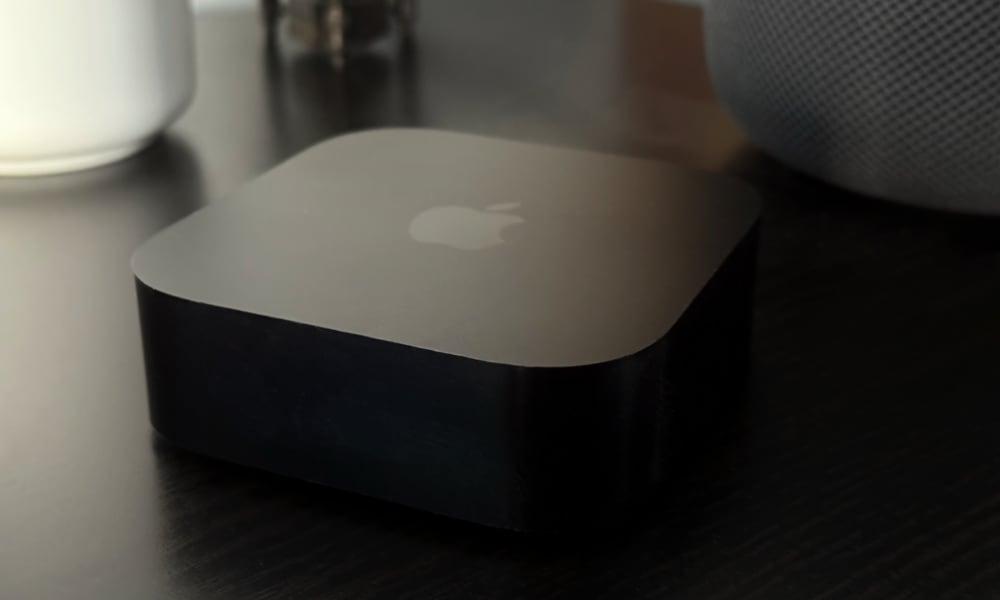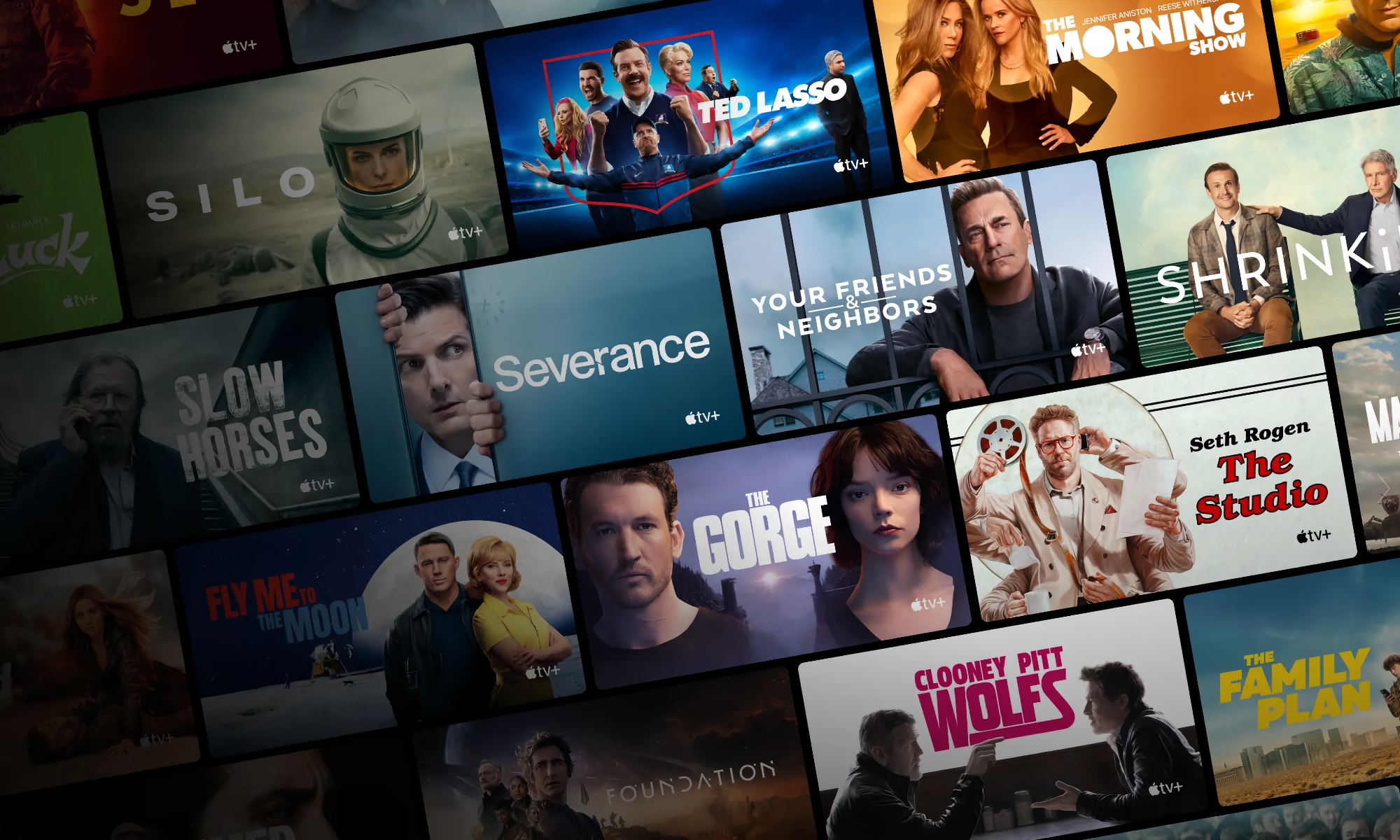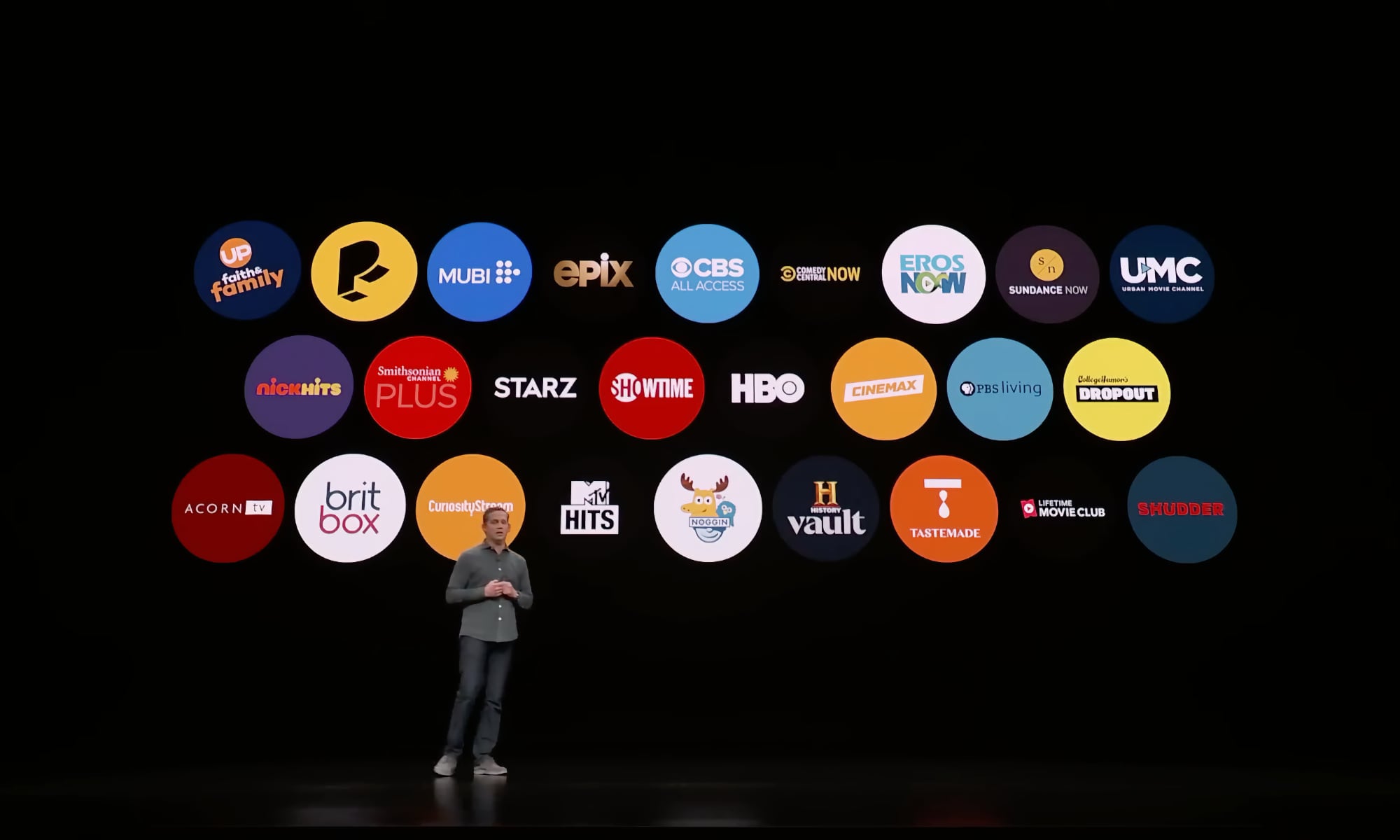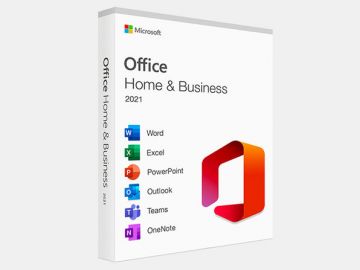Apple Quietly Removes the Plus from Apple TV+
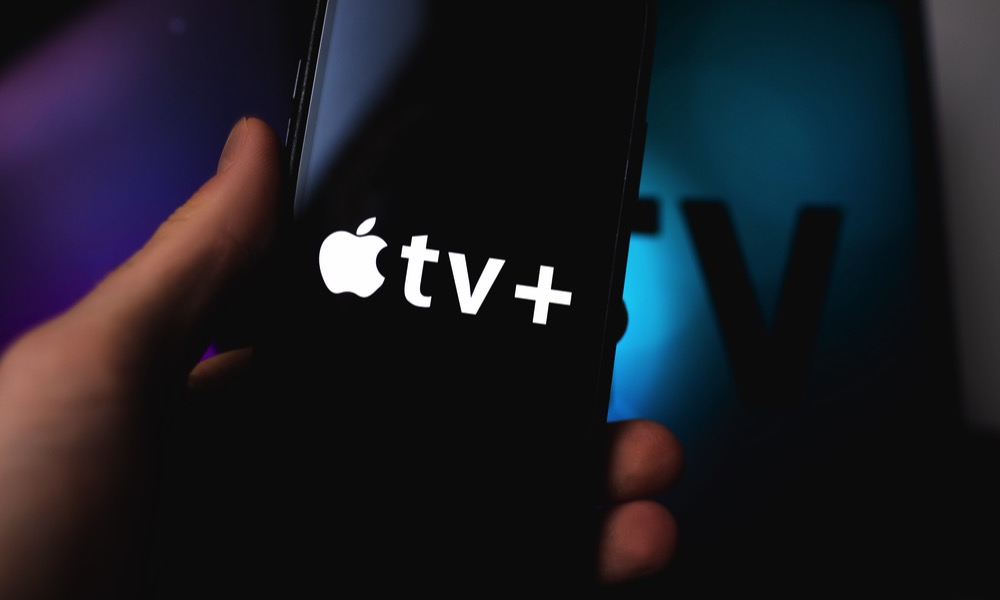 Nikkimeel / Shutterstock
Nikkimeel / Shutterstock
Toggle Dark Mode
From today onward, the streaming service formerly known as Apple TV+ will simply be called “Apple TV.”
In what feels like a footnote on its announcement of an official streaming date F1: The Movie on Apple TV+ … er, Apple TV, the company said it’s simplifying the brand:
Apple TV+ is now simply Apple TV, with a vibrant new identity.
We’ll likely have to wait to see what Apple means by a “vibrant new identity,” as so far everything looks pretty much the same. The icon for the TV app has gotten more colorful in the latest OS 26 betas, released earlier today. However, if anything, that just contributes to the confusion.
For a company obsessed with minimalism, Apple’s naming conventions have become a tangled mess.
Apple TV in Apple TV on Apple TV
It’s hard to tell whether Apple is intentionally muddying the waters or getting ahead of more upcoming announcements, but as of today, “Apple TV” now refers to three different things:
- Apple’s set-top box: Released in 2007, it was the first semi-mainstream product to carry the Apple prefix. Several reports suggest that Apple wanted to call it “iTV” to stick with the rest of its “i” branding, but had rights problems with a UK TV network of the same name. Either way, for nearly a decade, “Apple TV” meant a hardware device, and nothing else.
- Apple’s TV app: In 2015, Apple released a fourth-generation Apple TV, transitioning its set-top box to a full-fledged operating system it dubbed tvOS. In 2016, Apple introduced a TV app that would become a “universal content hub,” providing a single point of access for streaming content from multiple services. Most signed on pretty quickly; Netflix remains the last major holdout. Today, the Apple TV app is available on the iPhone, iPad, Mac, and Apple TV set-top box, but it’s also found on smart TVs, game consoles, and even Android smartphones.
- The Service Formerly Known as Apple TV+: Apple significantly increased its services portfolio in 2019, and among these was a long-rumored streaming service it dubbed Apple TV+. For the past six years, this has been primarily the home of Apple Originals, but the company also has a small back catalog of content from the franchises it’s become the caretaker of, such as Peanuts and Fraggle Rock, and it occasionally runs limited-time free promotions of older movies from other studios. There’s also MLB Friday Night Baseball.
It’s probably fair to say that most people now think of the streaming service when they hear the name “Apple TV” — a testament to the company’s marketing of its original shows and films — but Apple’s branding has already created no small amount of confusion, and this latest change is just going to add to it.
I’ve often had to explain to non-technical folks that having the Apple TV app on their iPhone doesn’t automatically let them watch Ted Lasso. They need a subscription for that, which is why it’s Apple TV Plus. Also, you don’t need to buy an Apple TV to watch Apple TV+ (although I’m sure Apple would be more than happy to sell you one).
Now, things could get even weirder. You want to watch Slow Horses? It’s on Apple TV in the Apple TV app, which you can run on your Apple TV. Granted, that last part isn’t strictly necessary — and most folks wouldn’t care — but the app is a requirement for anyone who isn’t just watching through a browser on their Mac or PC. Having the plus sign there made it clear that the streaming service was something more than the app — and that the app wasn’t just a portal to the streaming service.
As John Gruber points out, it feels like watching Abbott and Costello’s classic Who’s on First routine.
The Apple+ Era
It’s an interesting twist, as Apple TV+ kicked off the era of Apple’s “plus” services, but in some ways, it’s also going back to some arguably simpler roots. Apple TV+ launched alongside Apple News+, and the company would later expand that into Apple Fitness+ and iCloud+. There have even been rumors of a Health+ service coming next year.
What most of these “plus” services have in common is that they take an existing app or service and expand on it. Apple News will aggregate news stories from hundreds of sources without requiring you to pay a dime to read them, while News+ gives you access to paywalled publications like The Wall Street Journal and (more recently) The Washington Post along with over 200 digital magazine subscriptions.
Apple TV+ gives you Apple’s original content in the TV app alongside all the other streaming services (most of which require that you pay for them separately, but that’s another matter). Apple Fitness+ adds guided video workouts to the free Fitness app, and iCloud+ offers add-on features to those willing to pay for storage instead of relying on the paltry 5 GB that Apple gives away for free.
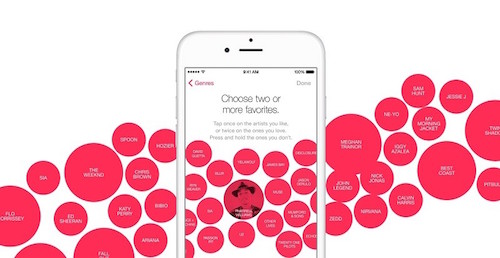
Then there’s Apple Music. Launched in 2015, long before plus signs were gleaming in Tim Cook’s eyes, it was never anything more (or less) than an all-you-can-listen streaming service. However, it didn’t launch the “Music” app on the iPhone; Apple had rebranded that from “iPod” in 2011. It just gave people a way to access a virtually unlimited catalog of songs instead of transferring their own music over from iTunes on a Mac or a PC.
By the convention that Apple adopted for TV, News, and Fitness, Apple’s streaming service should have been Apple Music+, but that never happened — even retroactively. Of course, not all services bear the plus suffix; Apple Arcade is a notable exception, but that’s because Apple never had anything like it previously. There’s never even been an “Arcade” app on anything but the Apple TV (set-top box); until recently, it’s been little more than an App Store section that can now also be found in Apple’s new Games app in iOS 26.
In some ways, Apple TV is now a much better fit alongside Apple Music, and there’s no doubt those are the company’s two most prominent services. This could foreshadow a “post-plus” era where Apple services stand alone as primary pillars rather than add-ons.
What Happens Next?
We have to wonder what will become of Apple News+ and Apple Fitness+, but for now, those at least still seem to fit, particularly in the case of News. I could see Apple Fitness+ also dropping the plus sign — it’s arguably an even more logical fit than Apple TV — but News remains a service that’s very cleanly split between free and paid content.
A New Class of Set-Top Box?
However, the biggest question is what this means for Apple’s hardware. To be fair, the Apple TV set-top box is already technically called the “Apple TV 4K,” although that designation has become less meaningful since it discontinued the original “Apple TV HD” three years ago. Further, like Apple TV+, nobody refers to the set-top box by its full name — it’s just “the Apple TV.” It’s also notable that Apple dropped the “tv” from the logo for its latest model, released in 2022.
Rumors of a new set-top box have been circulating for a while, but the one thing nobody has given much thought to is the possibility of a name change — until now, that is. If Apple plans to release the next-generation Apple TV 4K under a different name, it could help simplify the confusion.
By all accounts, Apple is preparing for a bigger push into the living room, with reports that it’s working on an AI-powered home hub and even a tabletop robot. The next-generation set-top box, which is expected to be powered by an A17 Pro chip, could easily become part of a new generation of devices, thereby gaining a new name. What that might be is anyone’s guess, but it’s not hard to imagine “Apple Hub” or “Apple Home” as fairly obvious choices, although there’s plenty of room for some more whimsical ones (Pippin, anyone?).
After all, the Apple TV set-top box hasn’t been essential to Apple’s streaming play in years. The Apple TV app is now available on nearly every smart home and mobile device you can think of, and last fall Apple TV+ even showed up as an Amazon Prime channel. It’s a safe bet that there are plenty of subscribers to Apple TV (the service) who are accessing it from other devices. No one is rushing out and buying Apple’s set-top box just to stream Ted Lasso or Severance, no matter how popular those shows are.
An Apple TV App Solely for Apple TV Content
It’s also possible that Apple might move away from the “content hub” approach of the TV app and devote it solely to content on its own services. That would be in line with what every other streaming provider has done from the start. You’d open the Apple TV app solely to access the Apple TV streaming service and content purchased from Apple (from what was once known as the iTunes Store, but is now baked directly into the TV app).
This could also become a bigger “meta-brand” move, unifying all Apple-produced content under “Apple TV” — especially if the set-top box gets a new name.
MLS Season Pass already lives in the TV app, mostly independent from the Apple TV streaming service, and it would help to gather its future sports ambitions — like the F1 deal that’s reportedly in its final lap — under a single thematic umbrella.
If Apple TV is the first to drop its plus, it might mark the start of a broader rebrand — a declaration that Apple’s services are no longer the add-ons to its ecosystem but core products in their own right.
What seemed like a great idea nine years ago hasn’t gone as well as Apple hoped. The company once envisioned a world where streaming providers would sign up to have content directly streamed through an initiative known as “Apple TV Channels.” This was introduced the same year as Apple TV+, with HBO, Showtime, Starz, EPIX, and CBS All Access (now Paramount+) on board at launch.
Since then, it has trickled down to only Paramount+, along with a handful of niche streaming services like the Smithsonian Channel and Acorn TV. It’s telling that Apple TV content is available as a Prime Video Channel, while Prime Video itself remains just another app on Apple’s devices.
Today, the Apple TV app primarily serves as a gateway to dedicated streaming apps and Apple TV content. Dropping that catalog of streaming apps would eliminate some of the confusion, and Apple could still keep its “Channels” partnerships, offering a service similar to Amazon’s, which it tried to copy but ultimately failed at — a rare case where Apple’s obsession with simplicity led to something anything but simple.

